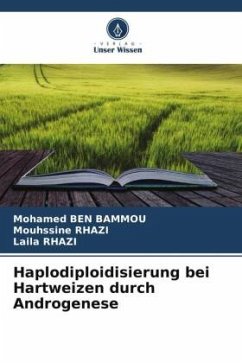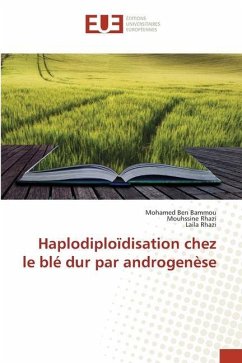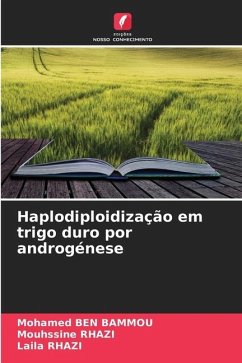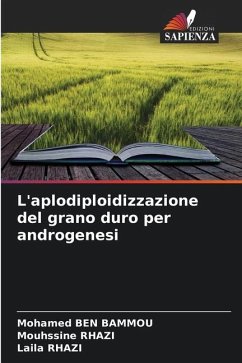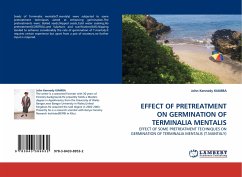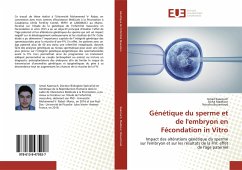
Haplodiploidization in durum wheat by androgenesis
Versandkostenfrei!
Versandfertig in 6-10 Tagen
29,99 €
inkl. MwSt.

PAYBACK Punkte
15 °P sammeln!
Haploids can be used to advantage in cereal breeding.The haplodiploidization method: in vitro androgenesis was applied to four durum wheat varieties (Marzak, Massa, Oum rabia and Tomouh).In addition to the effect of genotype, the different results obtained (callus, embryos and plants) were analyzed as a function of donor heel, cold pretreatment and culture medium (C17 and Olsen). The donor heel had a significant effect on embryo and callus induction, with the master strand giving better results than the first heel.A non-significant effect of cold pretreatment was demonstrated for embryo induct...
Haploids can be used to advantage in cereal breeding.The haplodiploidization method: in vitro androgenesis was applied to four durum wheat varieties (Marzak, Massa, Oum rabia and Tomouh).In addition to the effect of genotype, the different results obtained (callus, embryos and plants) were analyzed as a function of donor heel, cold pretreatment and culture medium (C17 and Olsen). The donor heel had a significant effect on embryo and callus induction, with the master strand giving better results than the first heel.A non-significant effect of cold pretreatment was demonstrated for embryo induction and callus production, but also on regenerant quality. It was also found that a single embryo produced on Olsen medium gave a chlorophyll plant, whereas those produced on C17 medium gave no plant at all; albinism was also absent. The genotype factor is very important for embryo induction and regeneration. The results show that durum wheat remains a recalcitrant genotype, especially for seedling regeneration.





